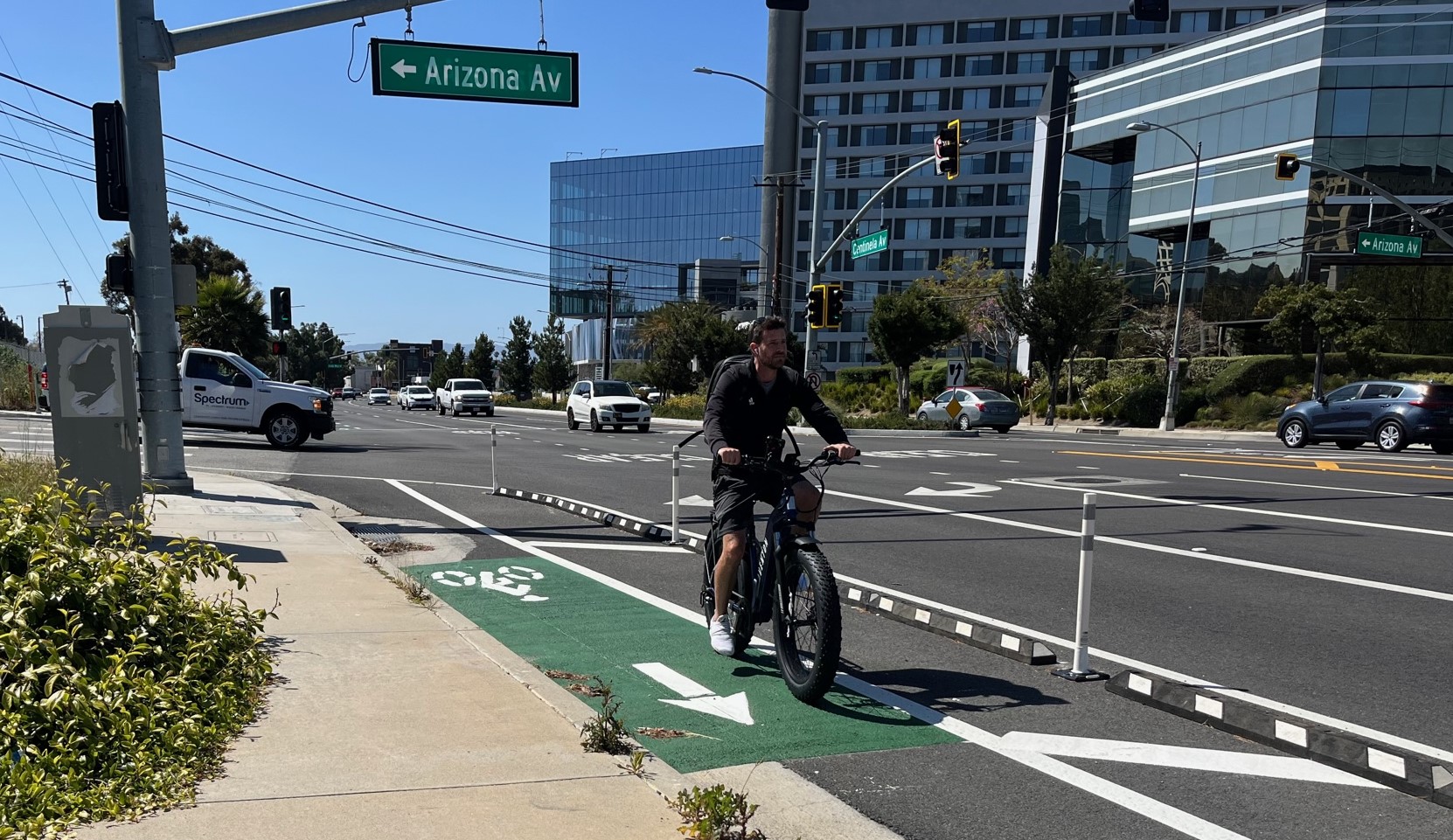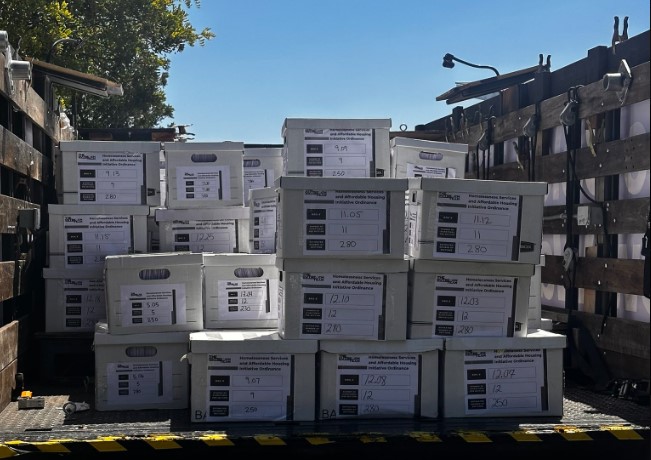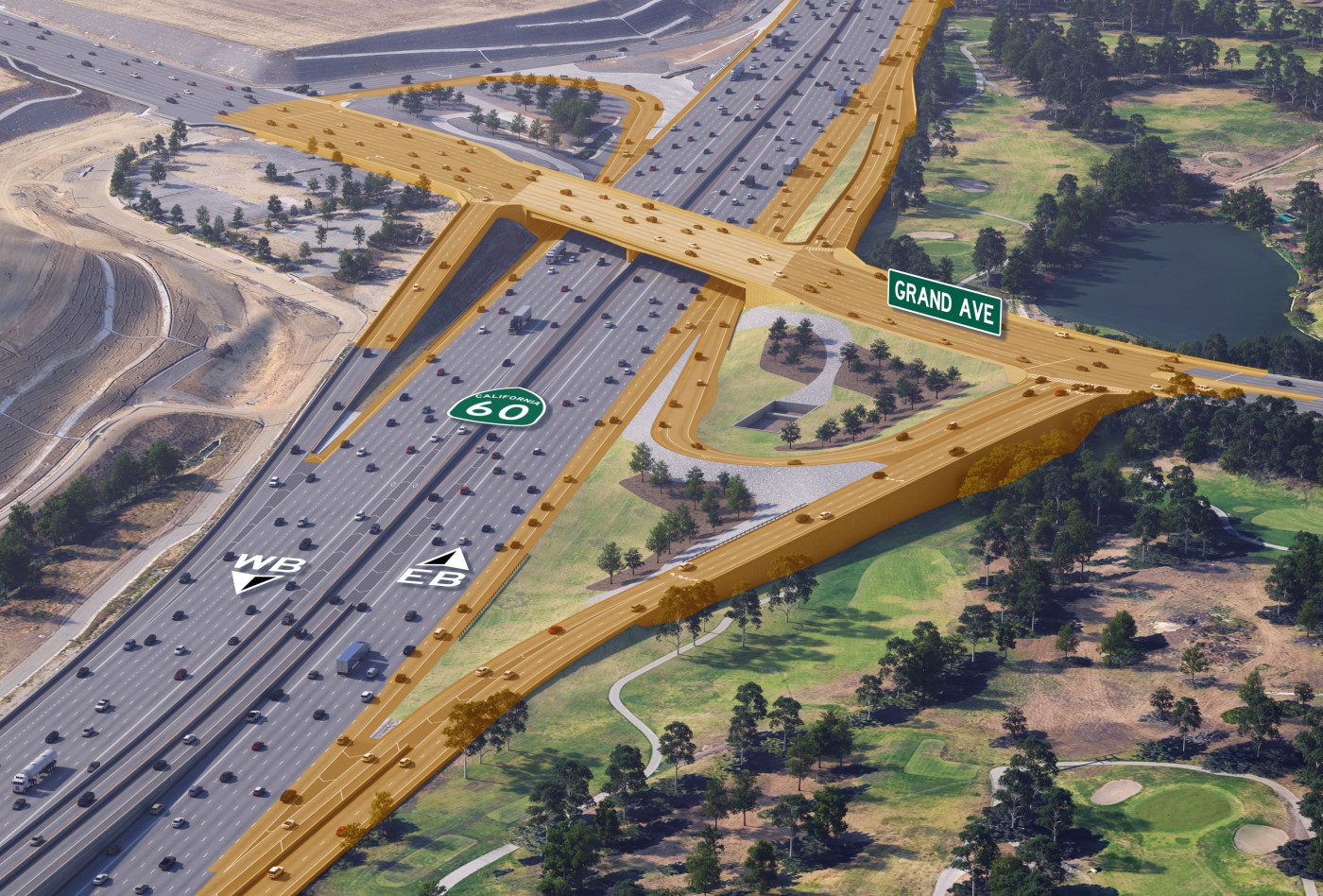How Far is Too Far?: Fortress USC and the Struggle to Keep Students Safe
12:23 PM PST on January 15, 2013
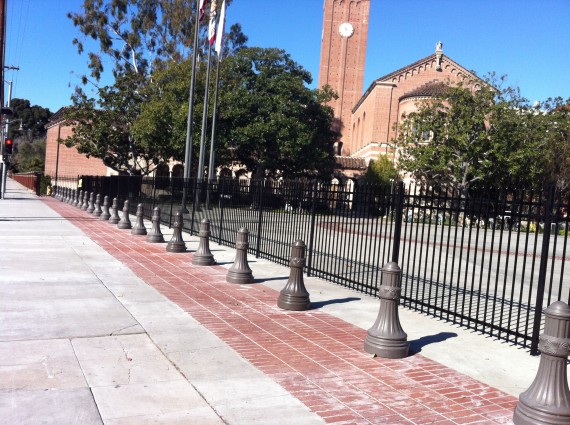
New security gates appeared along Exposition Blvd. recently as part of USC’s effort to make its campus more secure for students. (photo courtesy of Jonathan Weiss)
WHEN I BEGAN MY GRAD PROGRAM at USC in 2001, I lived north of campus a few blocks on Hoover Street. As my daylight hours were generally occupied with classes and teaching responsibilities, I tended to get my long-distance runs in well after dark. Instead of being able to clear my head as I did figure-eights around campus and Exposition Park, however, I was often stopped by police who wanted to know what the hell I thought I was doing.
"Don't you know bad things happen around here?" I was asked when stopped along King Blvd. one night. "There are drug dealers in that house right there," an officer said, pointing to one of the houses across the street.
"I'm not in the market for any drugs, officer," I told him.
"You don't get it," he said, exasperated. "It isn't safe around here. This is a bad area. You shouldn't be here."
He was wrong. I did get it.
What I got was that USC and those asked to police the area felt that the best way to keep students safe was to warn them against their neighbors and keep them segregated. The less cross-over, the less chance, they seemed to assume, for problems to arise.
The effort to enforce this segregation was multi-fold. My students reported being warned at orientation to be wary of the community -- the long-time inhabitants of the neighborhood. Meanwhile, youth from the area who walked on or near the campus were hassled by the police and on-campus security, asked about who they were, where they were headed, and what business they had being there.
Speaking to local youth participating in a walk on and around campus last year, Dyane Pascall, a young African-American resident of the area and Director of Finance and Administration for Community Services Unlimited, recounted that because he and another staff member had been hassled by police so often when walking near USC -- not even on campus -- they had both decided to alter their routes to avoid the demoralizing aggravation of being constantly stopped.
For some of my (USC) students, the divide seemed unbridgeable. Many regularly bad-mouthed the community: "It's such a shitty area;" "There's nothing around here;" and the oddly self/image-conscious, "People look down on USC because it is in such a ghetto-ass neighborhood."
That certainly wasn't true of all students. Many took advantage of the opportunities available to get involved in the numerous efforts USC makes to invest in the community, such as helping out at area schools. But, even then, they weren't always able to translate lessons learned from those experiences to more harmonious living with long-time residents of the area.
When I suggested that a student looking for a summer program abroad begin by practicing his Spanish with his Guatemalan neighbors (whom I had met while doing a photo project), he scoffed at me: That's ridiculous.
What was he supposed to do, just knock on the door and introduce himself? He preferred to go some place with real culture and real Spanish, he said. What would he talk to them about, anyways? He was sure they would have nothing to say to each other.
####
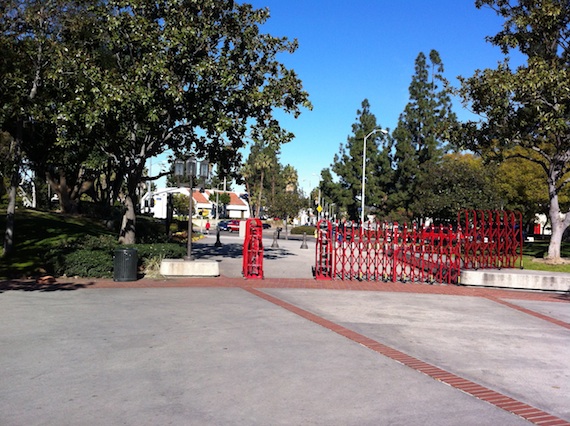
Now, USC has gone even further in reinforcing that divide between students and residents of the area by doing everything but installing a gator-filled moat around the perimeter.
Between 9 p.m. and 6 a.m., access to the campus has been restricted to students, faculty, staff, and their guests, including guests at university events, seven days a week. The 27 access points have been reduced to 8 at night, including two checkpoints at the entrance at Jefferson Blvd. and Trousdale Pkwy, two at the end of Trousdale and Exposition Blvd., two on Figueroa St., and one at the Vermont Ave. entrance. Fencing along Jefferson (ugly chainlink for now) and Exposition (permanent gates), the installation of 38 on-campus security cameras (adding to the 72 cameras already installed around the perimeter of campus), and the positioning of contracted security ambassadors at strategic locations throughout the campus are intended to ensure these checkpoints are respected.
When I stopped by last night, the checkpoints were each manned by two security ambassadors and at least one member of the Department of Public Safety (DPS), all of whom took their jobs very seriously despite the frigid temperatures.
Want to cross through campus on your way home after you get off the Metro at the Expo/USC station at night? Chill on a quiet bench on campus and chat with a friend after catching an evening event across the street at the Natural History or California African American Museums? Or stroll through campus after a late night coffee at one of the cafes along the perimeter?
Sorry, but if you are not a student (or haven't gotten a student to register you online at visitor.usc.edu), it looks like you are sh*t out of luck. You might even be out of luck on the weekends, too -- day or night -- unless you are on a guest list for a specific event or there is a public event, such as the Festival of Books.
####
These somewhat drastic measures are largely (although, not completely) in response to calls for greater security in the wake of an on-campus shooting outside a party last Halloween. A third-party promoter had advertised at campuses around the city for a costume party thrown by the Black Student Assembly that was meant to be only open to students. A few of the more than 100 non-USC would-be party-goers that had been turned away at the door got into an altercation. Someone pulled out a gun began firing. Four people were wounded, one critically.
Students and parents alike called for greater security measures around campus. Even those that openly worried about the consequences of closing the campus off to the community did seem to agree that increasing security at night was essential. Although the shooting was the first on campus since 1992, the incident followed the April murders of two Chinese graduate students, shot to death while sitting in a car at Raymond Ave. and 27th St. (about a mile from campus), a horrifically senseless event that put everyone on edge.
Some of the new security measures are merited, no doubt, and can have a real impact on student safety. The prohibition of the use of third-party promoters, for example, is intended to ensure that on-campus events are manageable and do not attract non-students. A fingerprint scanning system implemented at on-campus resident halls has made them more secure (although it is annoying to some), significantly reducing property theft from the typical 25 - 30 incidents in a three-week period last semester to just one, according to DPS Chief Captain Carey Drayton. The security ambassadors stationed at numerous corners between Jefferson and Adams since 2009 have also made students (and their parents) feel safer about walking or riding around the neighborhood at night.
But the measures also raise questions about who USC imagines it is protecting itself from and the cost to that community.
The already heavy-handed policing of the area -- as far as local youth were concerned -- appears to have become even more intense since the shooting of the Chinese grad students and 30 police officers were added to the Southwest Division. Twenty-year old Fidel Delgado, life-long resident of the area, business administration student at LACC, and subject of a series of articles last year reports that officers now regularly pull up alongside him or his friends when they are walking outside to ask if they are on parole or probation before even bothering to ask their names. Some of the youth report being hassled in their own yards, with police pulling up and, without pretense of any niceties, demanding to know if they live there.
Police have even stopped by family gatherings and parties (when spotting a party-goer or two getting air outside) just to ask about who is there and what they are doing, Fidel says. Maybe they are worried about seeing so many Latinos together, he shrugs with a laugh, not sure if he should say that but unable to find any other explanation for the way he and others from his community are being treated.
It's getting really bad, he mused from behind the counter of the coffee shop where he works, across the street from campus.
Unsettlingly, he and his friends all live well north of Adams Blvd., more than a mile from campus. Which raises questions about just how much of the surrounding area USC feels it has the right to claim as its territory and whether, as it expands, the members of outerlying communities will be made to feel even more unwelcome in their own neighborhoods.
The December approval of the USC Specific Plan gives USC the green light to replace the University Village shopping area with a 35-acre "Village at USC" that will include a pedestrian-friendly mix of shops, restaurants, a grocery store, a hotel, a movie theater, student housing, and academic offices. According to the Chronicle of Higher Education, the project should result in 8,000 in permanent new jobs at the redeveloped complex, at least 30 percent of which will go to local residents.
Much of the drawn-out negotiations between USC and the community about the plan had been dedicated to ensuring local residents and businesses were not pushed out of the area. The community had wanted USC to view them as a partner and an asset, something they appeared to have achieved with the historic agreement. The likelihood that security will continue to be a paramount concern as that project moves forward, however, raises questions about how the university will balance security with openness. Will the placement of student housing within the new village mean that the site will need to be shut off to the community as well?
What are your thoughts about the new measures? Or about what they mean for the future of relations between USC and the community? Student safety is a genuine concern and USC has a duty to protect its students, but is hunkering down in a fortress the right balance between security and openness? I'd say let loose with your thoughts below, but since USC is also looking for your feedback, that might be the best place to voice your approval or concerns. They have set up an online form that allows students, community members, and interested parties to register their thoughts and suggestions. To add your voice to the mix, please click here.
*For continued coverage of profiling issues around campus please click here and here.
**Many thanks to grad student Brian Hsu, who, concerned about USC shutting itself off to the community, sent the link to the feedback form to us in an email this morning. And to Eric Bruins and Jonathan Weiss for sending along their photos and concerns this past weekend.
Sahra is Communities Editor for Streetsblog L.A., covering the intersection of mobility with race, class, history, representation, policing, housing, health, culture, community, and access to the public space in Boyle Heights and South Central Los Angeles.
Stay in touch
Sign up for our free newsletter
More from Streetsblog Los Angeles
Eyes on the Street: Recent Centinela Bike Lanes in Culver City
The new partially-protected Centinela facility is a welcome safety upgrade for a stretch that long lacked any type of bikeway, but the area remains not all that bike-friendly
This Week In Livable Streets
Bike Month continues, Metro 91 Freeway widening, Destination Crenshaw, Culver City Bus, Santa Monica MANGo, Metro bike lockers, Metro Sepulveda Transit, and more
San Fernando Valley Bus/Bike Updates: G Line, Roscoe Bus Lanes, Laurel Canyon Bike Lanes
Short newly protected bike lane on Laurel Canyon Blvd, extensive NSFV bus improvements under construction this month, and scaled-back G Line plans should get that project under construction this summer
